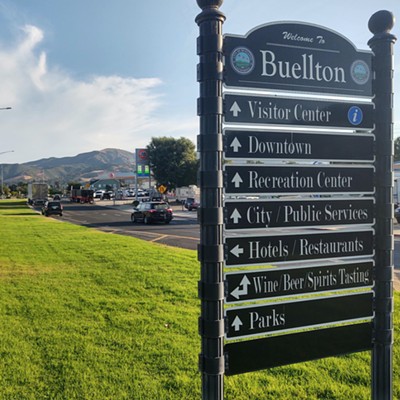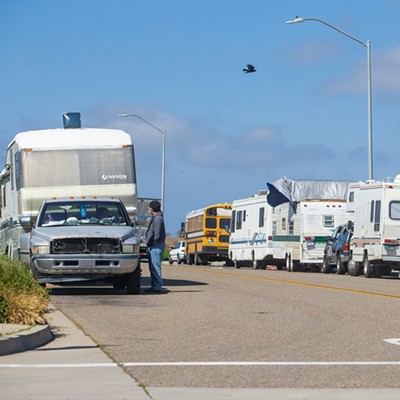A tanker truck containing thousands of gallons of crude oil overturned on Highway 166 March 21, resulting in an oil spill into the Cuyama River, Santa Barbara County Fire Department Public Information Officer Daniel Bertucelli told the Sun.
The truck involved with the accident is from Petrol Transport Inc., a California crude oil transport company, California Department of Fish and Wildlife (CDFW) Public Information Officer Eric Laughlin confirmed.
The county fire department’s construction division came onto the scene Saturday to create underflow dams to help mitigate the situation. Additionally, a unified command was formed to oversee cleanup operations including the county fire department, the CDFW, the Environmental Protection Agency, and the oil trucking company in question.
“We put pipes in the riverbed to allow the water to flow through the pipe,” Berticelli explained. “Then we built a dam on top of those pipes, which causes a containment pool. We put an oil containment boom in that pool. As the water dams up, the oil stays on the surface with the boom, and then the clean water underneath is able to continue to flow down the river. Then we have vacuum trucks that come in and skim the oil off the surface.”
Recent rainy weather conditions posed a potential roadblock to these containment methods, but Laughlin told the Sun that the containment boom held up well despite the rain.
However, even with the unified command’s best efforts, total recovery from oil spills like this one is not possible, according to Center for Biological Diversity’s Oceans Program Litigation Director Kristen Monsell.
“We’re still monitoring the situation and still learning the details, but it’s impossible to clean up all the oil that spills in situations like this,” Monsell told the Sun. “The area is home to species who are listed as threatened and endangered under the federal Endangered Species Act that are already struggling to survive, and this is just another threat to their survival.”
Laughlin said that as of March 23, a Western pond turtle and a belted kingfisher, a type of bird, were recovered alive from the spill and are receiving veterinary care and cleaning at Pacific Wildlife Care in Morro Bay. The Western pond turtle is currently under review by the U.S. Fish and Wildlife Service to be potentially added to the federal endangered species list, according to the Environmental Conservation Online System.
After 142,800 gallons of oil spilled into the ocean during the 2015 Refugio oil spill, oil drilling off the coast of Santa Barbara County was shut down. But in 2019, ExxonMobil proposed to restart three offshore drilling platforms, as well as put up to 70 oil transportation trucks per day on “windy, hazardous coastal highways,” Monsell said. She pointed to Saturday’s oil spill as reasoning to halt ExxonMobil’s proposal.
“It’s just one example on a very long list of why transporting oil is inherently dangerous,” Monsell said. “It highlights why Exxon’s proposal is so dangerous.”










